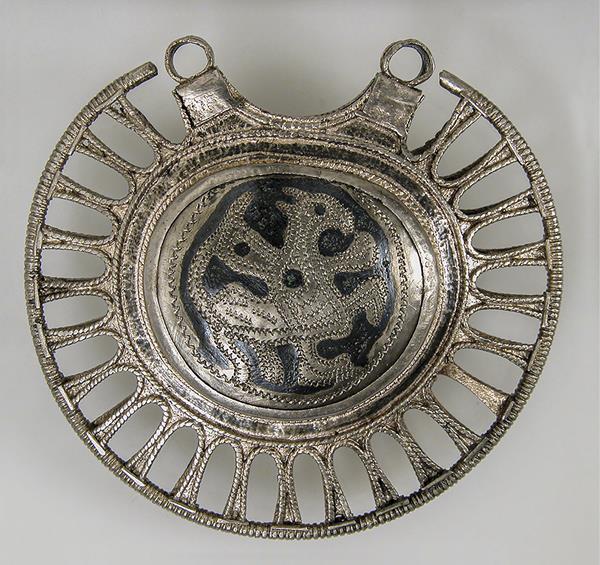
This circular pendant, crafted from silver and niello (a black alloy of sulfur mixed with copper, silver, or lead), depicts a mythical griffin outlined in black and surrounded by a series of braided arches within a filigree border. The pendant’s opposite side (not shown) features an intricate pattern of interlaced linear etchings. It was crafted in Kyiv sometime in the 11th–12th centuries C.E. and measures about 2.5 inches in diameter.
Known as temple pendants, such pieces were commonly connected by a short chain to a diadem-like headdress—a practice well attested from the Byzantine Empire. Although formally beyond Byzantine rule, Kyiv was one of Constantinople’s major trading partners and capital of the Kievan Rus Empire, which extended from the White Sea in the north to the Black Sea in the south. Some scholars believe this vast territory was first united by invading Vikings who founded the Kievan Rus state in the ninth century before quickly assimilating into the region’s eastern Slavic population. Indeed, Scandinavian influence may be seen in the interlacing patterns often found on the back side of temple pendants.
This pendant is now on display at the Metropolitan Museum of Art in New York.
Already a library member? Log in here.
Institution user? Log in with your IP address.

